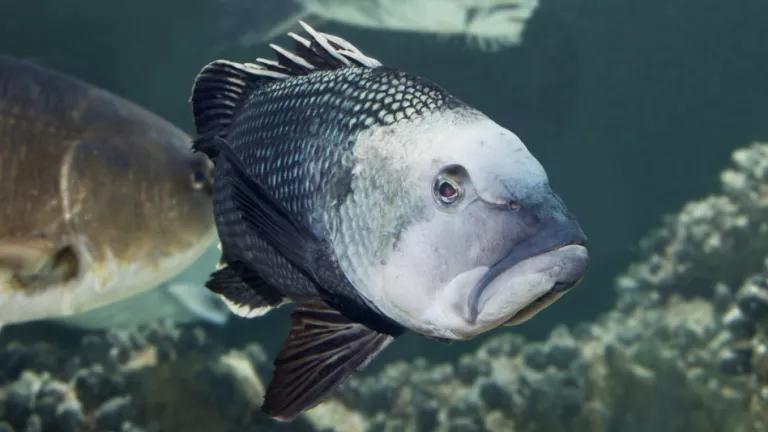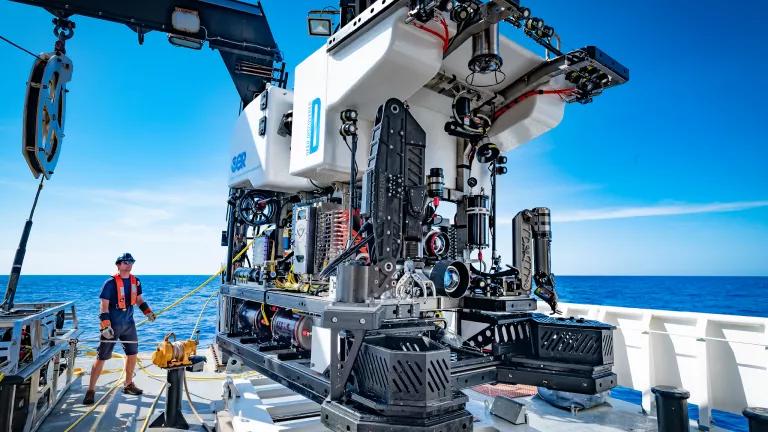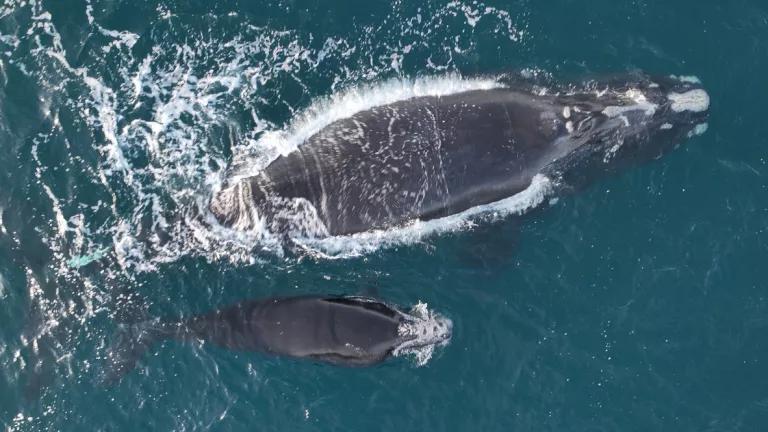
Imagine finding a new species of fish on an alien planet. Upon close inspection, you notice that the vast majority of individuals are female. You think: this doesn’t bode well for the species. And then, something magical occurs – a bunch of the females spontaneously transform into males and change color from black and gray to bright blue.
Sound like science fiction?
Not at all. Many species of fish right here on Earth, like Atlantic black sea bass, change sex and color like this. This convenient characteristic, called “protogynous hermaphrodism,” is a terrific trait to have, especially when many of the larger males are fished out of the population. But, it’s also a source of increased vulnerability to overfishing and depletion when all individuals are born female and most of the large male fish are caught before they can spawn.
These characteristics contributed to the decline of the South Atlantic stock of black sea bass over the past generation. Chronic overfishing from the late 1980s through 2010 prevented the population from recovering to healthy levels. Short-term thinking and weak management ruled the day until Congress finally intervened in 2006 with a mandate that all federally-managed fisheries adopt science-based annual catch limits with strict accountability measures (like in-season closures when the catch limits are met).
And what do you know - it’s worked! Overfishing finally ended in 2011, the first year the new catch limits went into effect. Aided in part by a robust 2010 “year class” of young fish, the latest stock assessment shows that South Atlantic black sea bass has indeed rebuilt.
So, what does this mean for fishermen and the local economy? Fishery managers voted recently to double catch limits from those of recent years to a level that hasn’t been seen for over two decades – about 1.8 million pounds per year. The government estimates that this will translate into more than $10 million in additional recreational angler expenditures and nearly $1 million more in commercial ex-vessel revenue compared with the recent past. We are excited by this excellent news and the benefits that it should bring to fishing communities, although continue to have some concern that the projection estimates may be a bit too optimistic given uncertainties in the stock assessment and that such a steep increase in one year may prove to be a bit too much too soon.
Nonetheless, the federal fisheries law, the Magnuson-Stevens Fishery Conservation and Management Act, is working. The National Marine Fisheries Service now lists nearly three dozen fish populations that have recovered from being overfished. A recent NRDC study found that two-thirds of all federally-managed fish stocks with rebuilding plans implemented after a previous change to the law in 1996 have either recovered or made significant progress. As a result, commercial revenues from these stocks are up 94% since the start of rebuilding.
Despite this incredible progress, some of the loudest fishing industry voices are pressuring Congress to significantly weaken the law. Under the guise of “increased flexibility,” proposed legislation would essentially gut the very same conservation mandates regarding overfishing and rebuilding that are reviving our fisheries.
We are now seeing the most abundant fish populations in a generation. The progress has not been easy, many have sacrificed, and much work remains to ensure the progress continues. Changing climate, ocean acidification, habitat degradation, wasteful bycatch, and increasing demands on ocean resources all require focused attention and smart planning. Let’s continue working together to solve these problems rather than exacerbate them with a return to the short-sighted management of the past.



